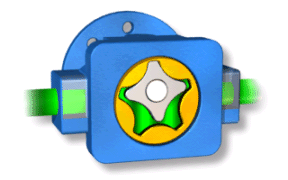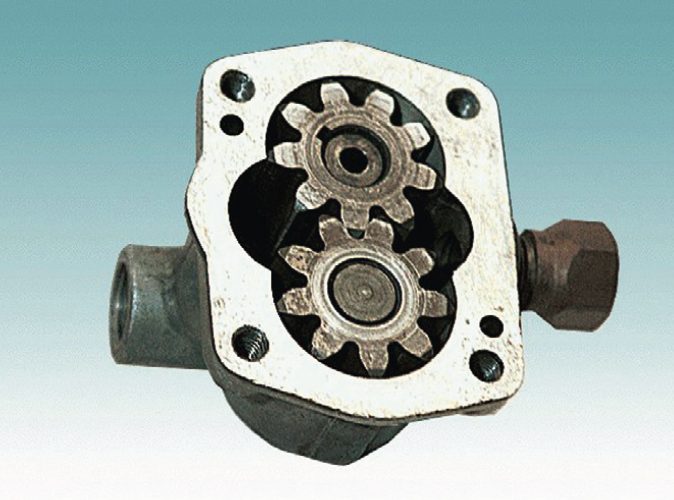
Gerotor pumps are an innovative and efficient type of positive displacement pump that have been gaining popularity in recent years due to their unique design and numerous benefits. One of the most interesting applications of this type of pump is as a crankshaft-driven pump. In this blog post, we’ll explore what a gerotor pump is, how it works, and why it’s an excellent choice for crankshaft-driven systems.
First, let’s define what a gerotor pump is. A gerotor pump is a type of positive displacement pump that uses a rotor with a set of teeth to move fluid through a fixed outer casing. The rotor and casing are both typically elliptical in shape, and as the rotor turns, fluid is drawn in through one side of the pump and then forced out through the other. This design allows gerotor pumps to move a high volume of fluid at a relatively low pressure, making them ideal for many industrial and automotive applications.
So, why choose a gerotor pump for a crankshaft-driven system? One of the main advantages is that gerotor pumps can operate at higher speeds and pressures than many other types of pumps, thanks to their unique design. This means that they can provide a high flow rate even in applications where there is a significant amount of resistance or back pressure.
Another advantage of gerotor pumps is their efficiency. Because they are positive displacement pumps, they can move a fixed volume of fluid with each revolution of the rotor, which means that they don’t rely on velocity or pressure to move the fluid. This translates into less wasted energy and a more efficient overall system.
In addition, gerotor pumps are relatively compact and lightweight, making them an excellent choice for applications where space is limited. They are also easy to install and maintain, which can help to reduce downtime and maintenance costs.
Crankshaft-driven gerotor pumps are particularly well-suited for automotive applications, such as lubrication systems, transmission systems, and hydraulic systems. In these applications, the pump is driven directly by the engine’s crankshaft, which means that it is always in sync with the engine’s RPM. This helps to ensure that the pump is providing the necessary flow rate and pressure at all times, which can help to extend the life of the system and improve overall performance.
In conclusion, gerotor pumps are an excellent choice for crankshaft-driven systems due to their efficiency, compact size, and high flow rates. They are well-suited for a variety of industrial and automotive applications, and can help to improve the performance and reliability of these systems. If you are in the market for a new pump for your system, a gerotor pump driven by the crankshaft is definitely worth considering.

Sure! Let’s dive a bit deeper into how gerotor pumps work and why they are so well-suited for crankshaft-driven systems.
As I mentioned earlier, gerotor pumps use a rotor with a set of teeth to move fluid through a fixed outer casing. The rotor and casing are both typically elliptical in shape, with the rotor rotating eccentrically within the casing. As the rotor turns, the volume between the teeth and the casing changes, causing fluid to be drawn in through one side of the pump and then forced out through the other.
One of the key advantages of this design is that it allows gerotor pumps to provide a high flow rate even at relatively low speeds. This is because the movement of the rotor creates a positive displacement effect, meaning that a fixed volume of fluid is moved with each revolution of the rotor. This is in contrast to other types of pumps, such as centrifugal pumps, which rely on velocity and pressure to move fluid and may not be as efficient at lower speeds.
Another advantage of gerotor pumps is their ability to operate at high pressures. This is due to the fact that the fluid is trapped between the teeth of the rotor and the casing, creating a seal that can withstand significant pressure. This makes gerotor pumps well-suited for applications such as hydraulic systems, where high pressures are often necessary.
When it comes to crankshaft-driven systems, gerotor pumps offer several advantages. One of the main benefits is their ability to operate at high speeds. Because the pump is driven directly by the engine’s crankshaft, it is always in sync with the engine’s RPM. This means that the pump can provide a high flow rate even at high engine speeds, which is particularly important for lubrication and cooling systems.
In addition, gerotor pumps are relatively compact and lightweight, which makes them well-suited for use in automotive applications. They are also easy to install and maintain, which can help to reduce downtime and maintenance costs.
Overall, gerotor pumps driven by the crankshaft are an excellent choice for applications where high flow rates and pressures are necessary. Their efficient and reliable design makes them ideal for use in automotive and industrial applications, and their compact size and ease of installation make them a popular choice among engineers and manufacturers.
Certainly! Here are some advantages and disadvantages of gerotor pumps:
Advantages:
- High Efficiency: Gerotor pumps are positive displacement pumps, which means that they move a fixed volume of fluid with each revolution of the rotor. This translates into less wasted energy and a more efficient overall system.
- High Flow Rate: Gerotor pumps are designed to move a high volume of fluid at a relatively low pressure, making them ideal for applications where a high flow rate is necessary.
- Compact Size: Gerotor pumps are relatively compact and lightweight, which makes them well-suited for use in applications where space is limited.
- High Pressure Capability: Gerotor pumps are able to operate at high pressures due to the fact that the fluid is trapped between the teeth of the rotor and the casing, creating a seal that can withstand significant pressure.
- Low Noise and Vibration: Gerotor pumps operate with very little noise and vibration, which can help to reduce wear and tear on the system and improve overall performance.
Disadvantages:
- Limited Pressure Range: While gerotor pumps are capable of operating at high pressures, they may not be suitable for applications where extremely high pressures are required.
- Limited Fluid Viscosity Range: Gerotor pumps are typically designed to work with low to medium viscosity fluids, and may not be suitable for applications where very high or very low viscosity fluids are used.
- Limited Suction Capability: Gerotor pumps may not be able to handle fluids that contain a high amount of solids or debris, as these can cause damage to the teeth of the rotor and the casing.
- High Manufacturing Costs: Gerotor pumps are typically more expensive to manufacture than other types of pumps, which can make them less cost-effective for some applications.
- Limited Temperature Range: Gerotor pumps may not be suitable for applications where extremely high or low temperatures are present, as this can affect the performance and lifespan of the pump.
Overall, gerotor pumps offer numerous advantages in terms of efficiency, flow rate, and compact size, but may not be suitable for all applications due to their limitations in terms of pressure range, fluid viscosity range, and suction capability.





